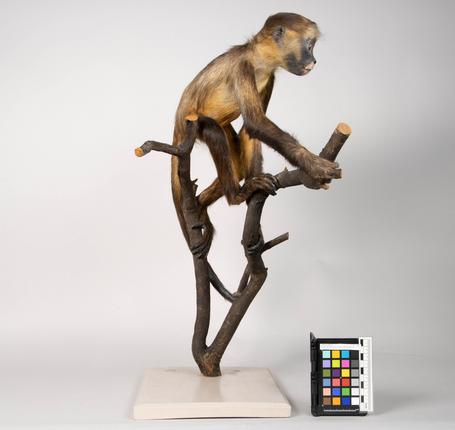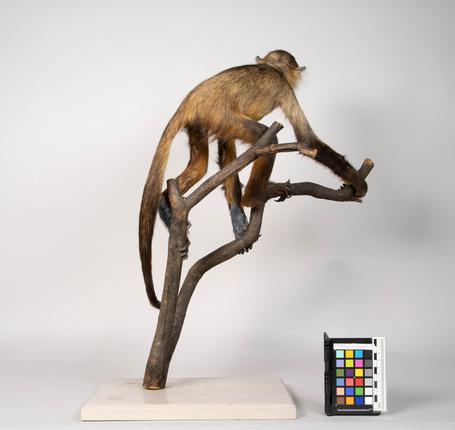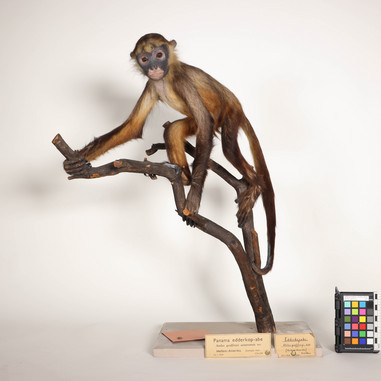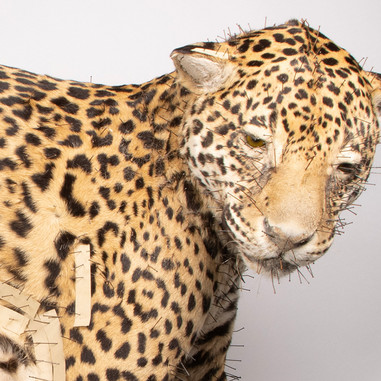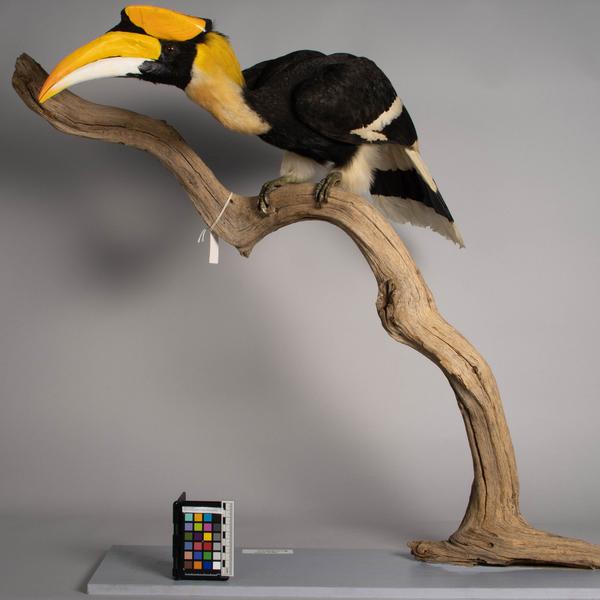
Treatment of a Great Hornbil
By Nicole Feldman
The great hornbill, Buceros bicornis, is a large bird found in India and Southeast Asia. It’s name stems from the casque, or boney extension on the skull or upper mandible. The large taxidermy hornbill mount will be on display in the new museum building at the Statens Naturhistoriske Museum. Fun fact: It is believed that you can hear the wing beats of a great hornbill more than 1/2 a mile away!
Condition
Before the great hornbill goes into the new museum, Conservation is tasked with preparing the specimen for display. The bird mount arrived at the conservation lab in fair condition. The specimen was securely attached to the wooden habitat branch, and there was no damage or breakage of major elements of the body. However, after sitting in collections for quite some time, the feathers showed an overall layer of dirt and grime, and the white wing and tail feathers, as well as plumulaceous feathers on the legs, had yellowed and darkened.
Further, there was minor distortion, and unzipping of the feathers throughout. The casque and beak also exhibited some damage, with some delamination of the bone layers on the casque. The paint on the beak and casque was also unevenly applied, streaky in many areas, and was not painted in a way that accurately and naturalistically represented the species.

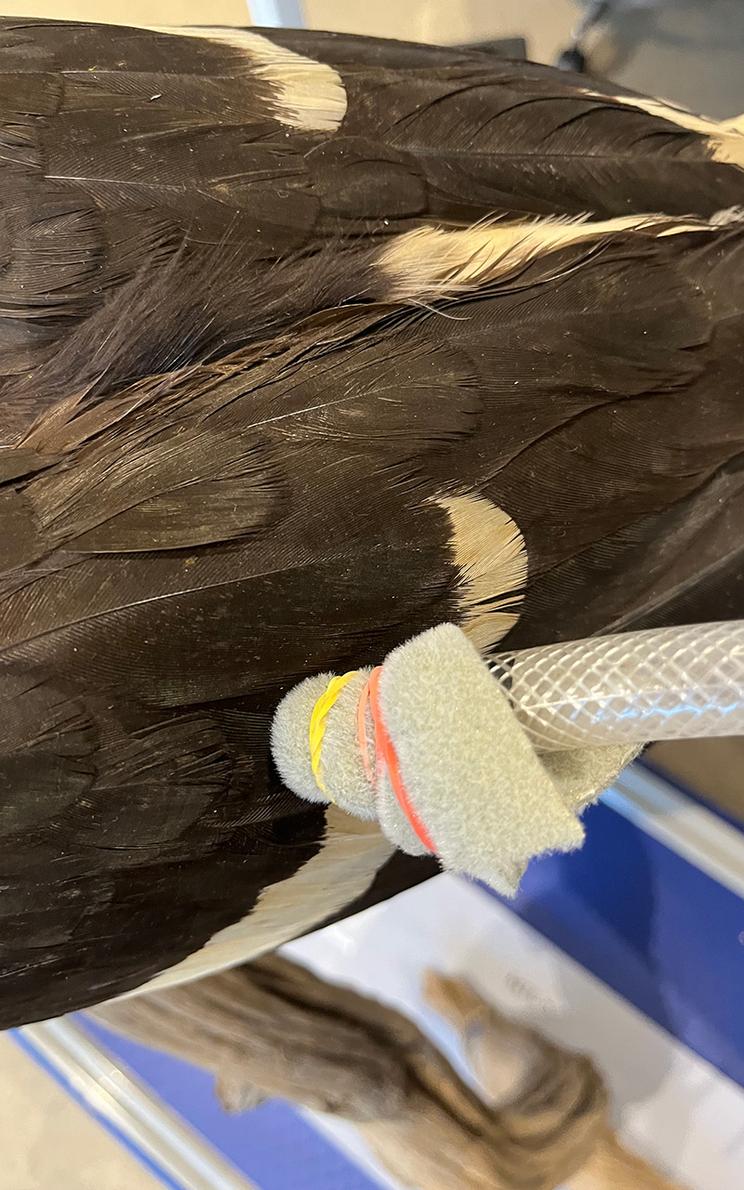
Treatment
Cleaning of the feathers
Cleaning of the feathers began with a gentle dry cleaning using a vacuum and soft brushes. This was followed by cleaning the feathers using a vacuum and hose attachment with Vellux fabric, a polyurethane foam core with nylon fiber pile, attached to the end. The vellux was gently brushed over the feathers, picking up dirt and mechanically preening the feathers at the same time.
On feathers with difficult to remove soiling, particularly the tail feathers, localized wet cleaning ensued. Several solvents and solutions were first tested to determine the method that would best pick up the dirt and grime, while also not damaging the feathers. Solutions included a 70% ethanol solution, ethanol, 1:3 acetone: Stoddard mixture, and saliva.
In all cases, blotter paper and/or Evolon CR (non-woven micro-filament textile) was placed underneath the feather and the solution was pipetted unto the feather. A rolled cotton swab dampened with solution was lightly rolled over the feather. In most cases, Evolon worked better than blotter paper, as it could easily conform to the feather and provided the most surface contact. Saliva and the 70% ethanol solution both worked well in picking up the dirt. In areas where the soiling was difficult to remove, the feather was sandwiched between blotter paper and Evolon, and solvent was pipetted unto the Evolon and allowed to sit for a few minutes.
This was followed by gently cleaning the surface with rolled cotton swabs dampened in solvent. While wet cleaning removed a significant amount of soiling on the feathers, the white feathers remained yellow. After wet cleaning, the feathers were dried with a hair dryer on the lowest setting with cool air to avoid any warping of the feathers.
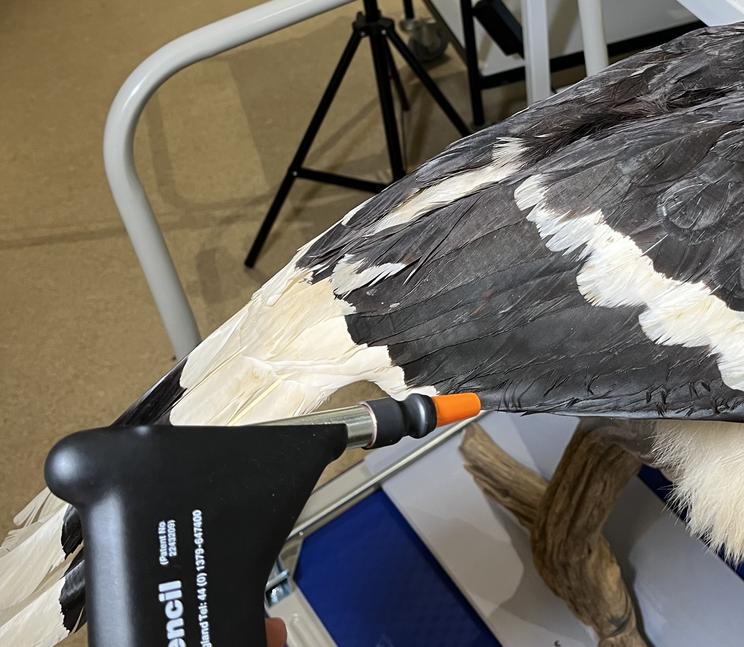
Feathers that were unzipped and twisted were gently mechanically preened using a preservation pencil. The preservation pencil releases a controlled and gentle warm mist that allowed the feathers to soften and rezip.
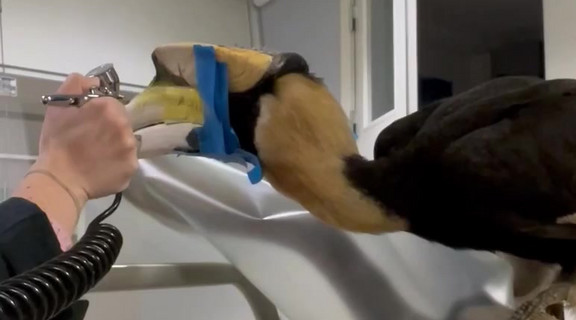
Recoloring
As mentioned previously, the paint on the beak and casque was streaky and uneven, and was not an accurate representation of the species in life. In addition, the feathers along the nape were no longer bright yellow, also characteristic of the Great hornbill. Based on fruitful discussions with the curator of Ornithology, it was decided to remove the paint and recolor the beak and casque, as well as the feathers along the nape.
First, the paint on the beak and casque was reduced/removed with acetone. The paint was extremely stubborn, and an acetone poultice (cotton dampened in acetone, wrapped in plastic wrap, and left for 30 minutes) was used to soften the paint. The paint was then picked up with rolled cotton swabs dampened in acetone.
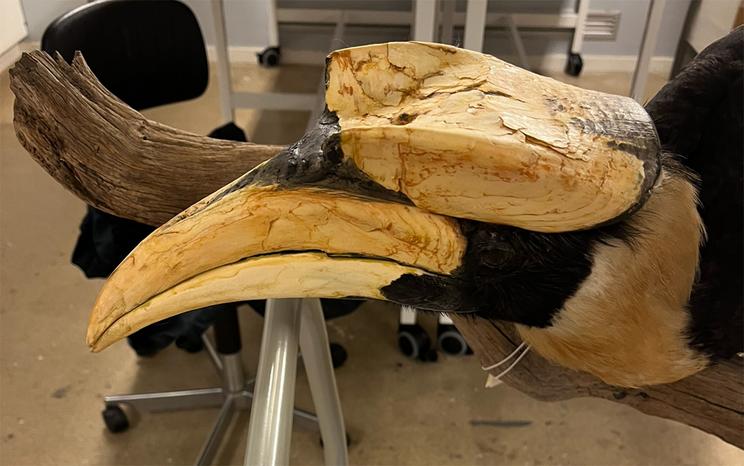
After the paint was removed, the beak and casque were airbrushed with high fluid golden acrylics. A base coat of white paint was first added, and thin layers of yellows and oranges were layered on top, creating a more bright and vibrant color. The airbrush allowed us to create a more even painted surface, as well as create a nice gradient from white to yellow and yellow to orange.
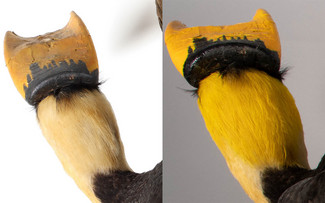
Lastly, the feathers around the nape were recolored with QoR paints in 70% ethanol solution. Blotter paper was placed underneath the feathers and the QoR paint was brushed on.

